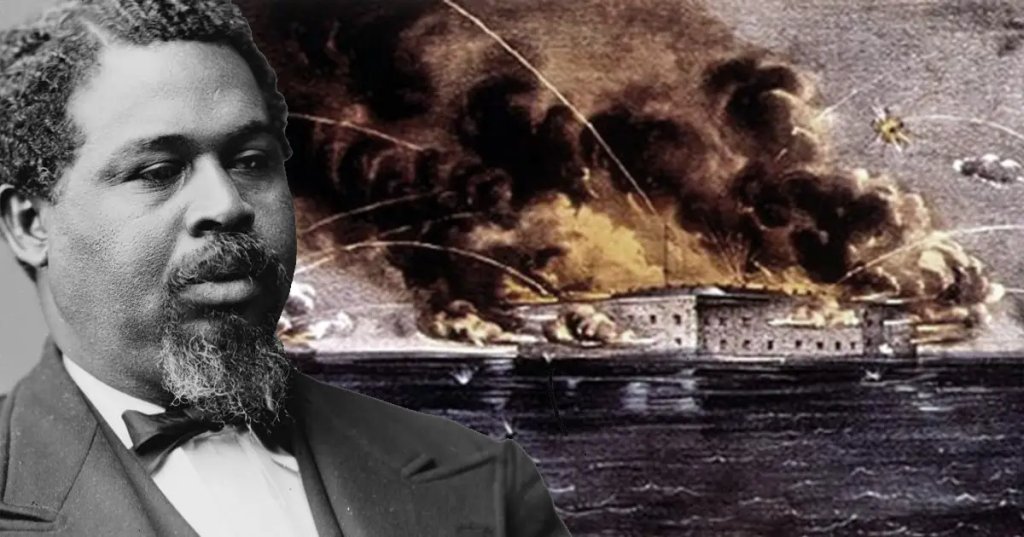

If there’s such a thing a revenge served warm, the story of Robert Smalls best describes it. Smalls was born into slavery in 1839 in Beaufort, South Carolina. He was hired out by his master in Charleston by the age of 12, working the hotels, docks, and wharves of Charleston Harbor.
It was while he was working in the hotel he met his wife, Hannah Jones, whom he married in 1856. She had a daughter already, and the two had a son and daughter. At the outbreak of the Civil War in 1861, Smalls was pressed into service on board the CSS Planter, a Confederate transport. This is where he would make history.
While the Planter’s three white officers were ashore, the seven slave crewmen decided to make a break for the Union blockade. The slave escape wasn’t just a spur-of-the-moment decision. They planned the escape meticulously, even picking up their families, who were hiding near the southern wharf.
He brought the ship and its cargo of cannon and ammunition to the Union, as well as the Confederate Navy’s code book and the map of Charleston’s harbor defenses.

President Lincoln and the U.S. Congress would award the prize money for the capture of the Planter to Smalls and his crew. Smalls’ bravery and skill became the instrumental argument for allowing black troops to fight for the Union.
“My race needs no special defense, for the past history of them in this country proves them to be equal of any people anywhere,” Smalls said. “All, they need is an equal chance in the battle of life.”
Smalls himself enlisted with the Union as a Naval pilot, eventually ending up back on the Planter, now a Union transport, as a free man. He piloted the USS Keokuk during a major attack on Fort Sumter in Charleston Harbor.
When the Keokuk’s skipper wanted to surrender during the failed assault, Smalls took command and got the ship to safety. For this, he was promoted to the Keokuk’s captain. When the war ended, Smalls took the Planter back to Charleston for the ceremonial raising of the American flag at Fort Sumter.

He returned to Beaufort, S.C. as a free man during Reconstruction. He opened a store for newly freed slaves and purchased his old master’s house. He eventually allowed his old master’s wife to move back into the house shortly before her death. The house still stands.
Smalls went on to serve in the South Carolina House of Representatives and Senate as well as the South Carolina militia as a major general. He was eventually elected to represent South Carolina in the U.S. House of Representatives and served for four years before his death in 1915.
